The American lion (Panthera leo atrox / Panthera atrox)
The largest lions in history – American lions – ruled in North and South America, and thus became the hallmark of the Pleistocene landscape. How did they cope with other large predators (e.g. saber-toothed tigers) and the first people who shared the same living areas? Why did they go extinct? We will try to answer these questions in this article. In the previous article, we presented American lions’ cousins from Europe and Asia – Eurasian cave lions.
The American lion, also known as Panthera atrox, is an extinct big cat that lived in North America during the Pleistocene era. It was one of the largest felines that ever existed, with males estimated to have weighed up to 350 kg (771 lb), around 25% larger than modern African lions.
The American lion is thought to have evolved from an ancestor of the modern lion around 400,00 – 500,000 years ago, and it is believed to have first appeared in North America around 200,000 years ago. It was a versatile predator that lived in a wide range of habitats, from grasslands to forests, and it preyed on a variety of large mammals, including mammoths, camels, and bison.
The American lion was a powerful hunter, with a large and muscular body and powerful jaws and teeth. It is not certain whether the American lion had a mane, like the modern African and Asiatic lions.
The American lion was a social animal and lived in groups, similar to modern lions. These groups were led by a dominant male, and females would work together to hunt and raise their young. The group would defend a territory together against other males, who would often have to leave their own group to find a new mate.
The American lion went extinct around 11,000 years ago, likely due to a combination of factors, including climate change and human hunting. Its extinction may have also been a result of competition with other predators such as the saber-toothed cat, Smilodon fatalis.
Despite its extinction, the American lion has had a significant impact on human culture. Fossils of the American lion have been found in many parts of North America, and they have been studied by paleontologists to learn more about this ancient predator. Additionally, the American lion has been depicted in the art of many indigenous cultures, and it continues to be an important symbol of power and strength in American culture.
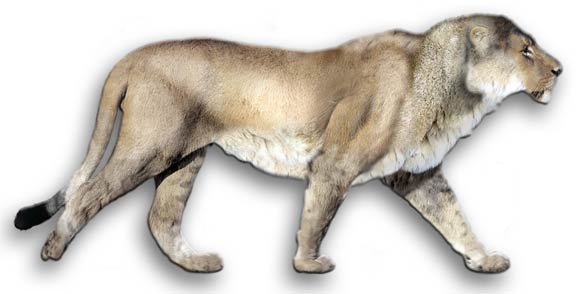
Classification
- Class: Mammal
- Oder: Carnivora
- Family: Felidae
- Genus: Panthera
- Species: Panthera leo
- Subspecies: †Panthera atrox / †Panthera leo atrox
- Names: The American lion, the North American lion, the American cave lion, Naegele’s giant jaguar
Dating and occurrence
This extinct and great cat lived in North America and north-western regions of South America in the Pleistocene from 1.8m to 11,000 years ago. It went extinct along with mammoths and other large mammals of the Pleistocene megafauna. Genetic analyses have shown that it was a sister lineage of the European lion.
It is believed, that the American lion was an endemic species of North America, and it got to the southern continent through a land passage that connected the two Americas.
However, what is interesting, the structure of the fossils found in Peru has been more similar to the bones of a big jaguar than a lion.
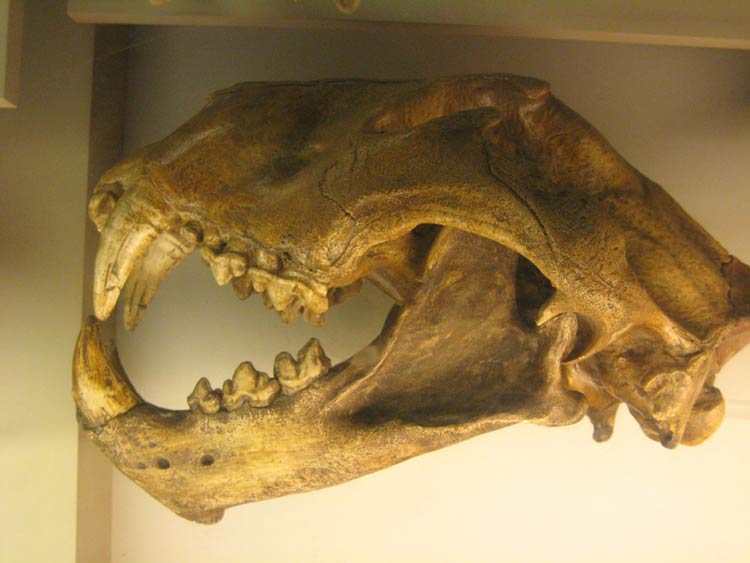
History and taxonomy
The American lion (Panthera atrox) is an extinct subspecies of lion that lived in North America during the Pleistocene era. It is believed to have evolved from an ancestor of the modern lion around 500,000 years ago and first appeared in North America around 200,000 years ago. The American lion is classified as a member of the genus Panthera, which also includes the tiger, leopard, and jaguar.
The American lion was first described by naturalist Joseph Leidy in 1853, based on fossil remains found in Texas. Since then, many fossils of the American lion have been found in various parts of North America, including Canada, Alaska, and Mexico.
In terms of taxonomy, the American lion has been classified as a separate subspecies of lion, Panthera leo atrox, based on morphological differences from the modern lion. However, there is an ongoing debate among scientists about the classification of the American lion, with some arguing that it should be considered a distinct species, Panthera atrox, rather than a subspecies.
The American lion went extinct around 11,000 years ago, likely due to a combination of factors including climate change and human hunting. Its extinction may also have been a result of competition with other predators such as the saber-toothed cat, Smilodon fatalis.
Despite its extinction, the American lion has had a significant impact on human culture. Fossils of the American lion have been found in many parts of North America, and they have been studied by paleontologists to learn more about this ancient predator. Additionally, the American lion has been depicted in the art of many indigenous cultures, and it continues to be an important symbol of power and strength in American culture.
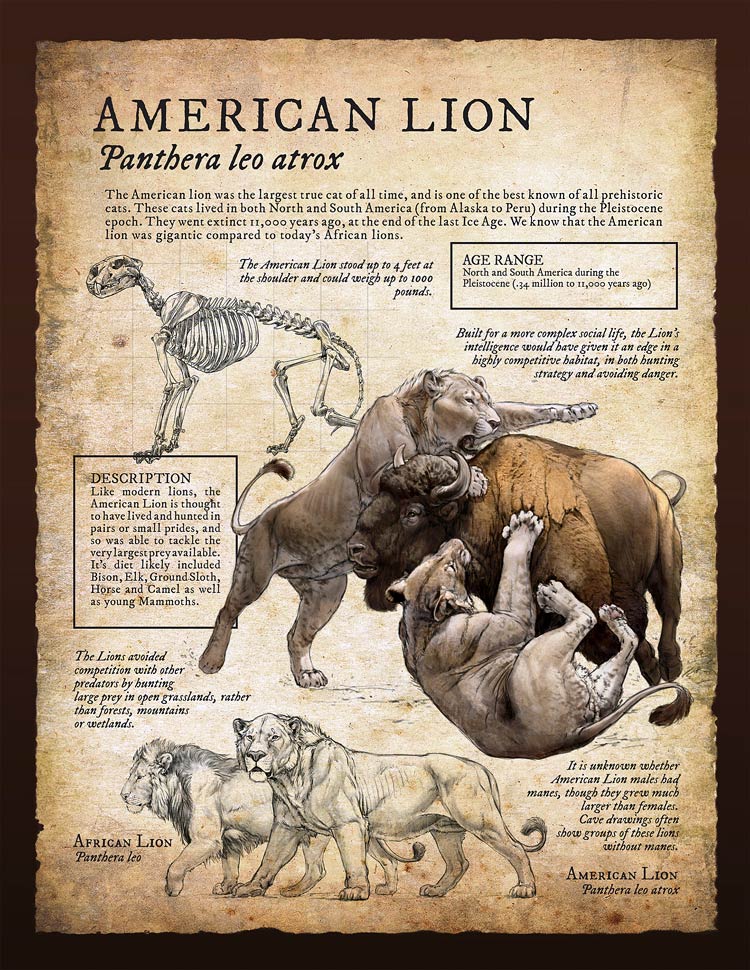
Evolution of the American lion (Panthera atrox)
The American lion, also known as Panthera atrox, is believed to have evolved from an ancestor of the modern lion around 500,000 years ago. The exact evolutionary lineage of the American lion is not well understood, but it is believed to have diverged from the modern lion around the late Pliocene or early Pleistocene.
The American lion’s closest living relative is the modern African lion (Panthera leo), and the two are thought to have shared a common ancestor. However, the American lion is considered to be a distinct subspecies due to morphological differences such as its larger size and more robust skull.
It is believed that the American lion first appeared in North America around 200,000 years ago, possibly through the Bering land bridge that connected Asia to North America during the Pleistocene. Once in North America, the American lion evolved to adapt to the diverse habitats and prey available on the continent. This adaptation is reflected in its larger size and more robust skull compared to its African cousin, which might have been an adaptation to hunting large prey such as mammoths, bison and camels.
The American lion and the saber-toothed cat, Smilodon fatalis, coexisted in North America for a period of time, and it has been suggested that competition between the two predators may have played a role in the extinction of the American lion. However, the exact cause of the extinction of the American lion is still debated among scientists, with some also suggesting that climate change and human hunting may have contributed to its disappearance.
In conclusion, the American lion (Panthera atrox) evolved from a common ancestor of the modern lion around 500,000 years ago, and first appeared in North America around 200,000 years ago. It evolved to adapt to the diverse habitats and prey available on the continent, which is reflected in its larger size and more robust skull. The exact cause of the extinction of the American lion is still debated among scientists, but it is believed to have gone extinct around 11,000 years ago.
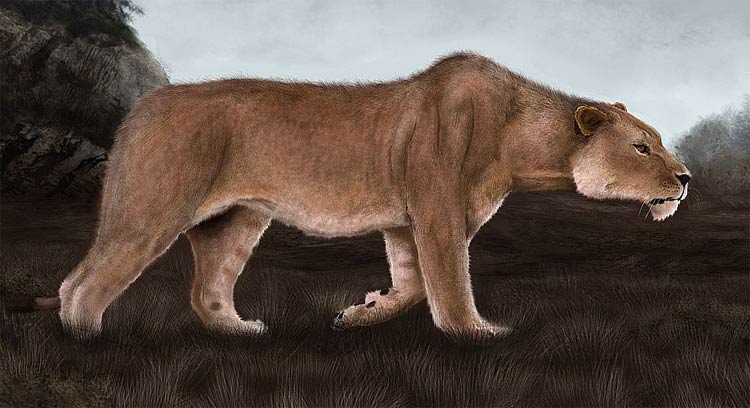
Description – physical characteristics
The American lion (Panthera atrox) was one of the largest felines that ever existed. Males were estimated to have weighed up to 350 kg (771 lb), around 25% larger than modern African lions. It had a distinctive mane, which was likely used to intimidate rivals and attract mates. Its fur was likely a tawny color, similar to that of modern lions.
The American lion had a large and muscular body, with powerful jaws and teeth. Its skull was more robust than that of the modern lion, reflecting its adaptation to hunting large prey such as mammoths, camels, and bison. Its teeth were also larger and stronger than those of the modern lion, which would have been useful for tackling large and robust prey.
The American lion had large and powerful legs, with retractable claws, which would have been useful for grasping and holding onto large prey. It also had a long and powerful tail that would have helped with balance and agility while hunting.
In addition to its physical characteristics, the American lion also had a unique set of hunting strategies. The American lion was a powerful hunter, with a large and muscular body and powerful jaws and teeth. It had a distinctive mane, which was likely used to intimidate rivals and attract mates. Its fur was likely a tawny color, similar to that of modern lions. American lions were also known to hunt in packs, which would have been an efficient way to take down large prey such as mammoths and bison.
Overall, the American lion was a formidable predator with unique physical characteristics and hunting strategies that allowed it to thrive in the diverse habitats and prey available in North America during the Pleistocene era.
Size
The body length of this predator ranged between 160-250 cm, and its average height at the shoulders was 120 cm, with a weight of 250-360 kg. Thus, it was the largest known species/subspecies of the lion in the history of Earth. However, if its measurements were real, it is possible that this animal belonged to the jaguar or the tiger species.
Diet
American lions were likely to have hunted on deer, equidae, and camelids of the species Camelophs hesternus, so-called Californian tapirs (Tapirus californicus), bison, mammoths, and other big herbivores.
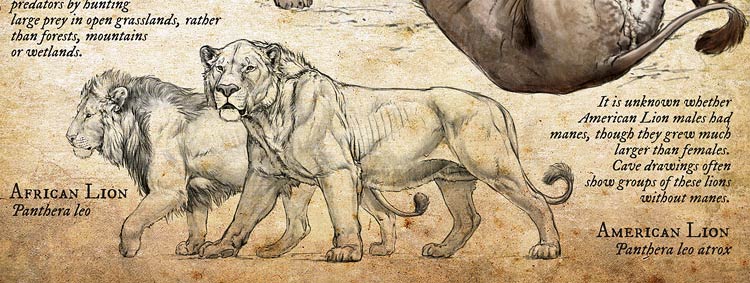
Distribution
The American lion (Panthera atrox) was a native species of North America, and it is believed to have first appeared on the continent around 200,000 years ago. Fossils of the American lion have been found in many parts of North America, including Canada, Alaska, and Mexico.
The American lion’s distribution was widespread across the continent, from the grasslands of the Great Plains to the forests of the Pacific Northwest. It is believed to have lived in a wide range of habitats, from grasslands to forests, and it preyed on a variety of large mammals, including mammoths, camels, and bison.
The American lion’s range extended from the Arctic Circle to the southernmost parts of Mexico, and it is thought to have been one of the most widely distributed large mammals in North America during the Pleistocene era.
It is believed that the American lion’s range began to shrink around 11,000 years ago, likely due to a combination of factors including climate change and human hunting. The American lion went extinct around the end of the Pleistocene period, and today it is not found in the wild.
In conclusion, the American lion (Panthera atrox) was a native species of North America, and it had a widespread distribution across the continent. It lived in a wide range of habitats, from grasslands to forests, and it preyed on a variety of large mammals. Its range began to shrink around 11,000 years ago, likely due to a combination of factors including climate change and human hunting, and it went extinct around the end of the Pleistocene period.
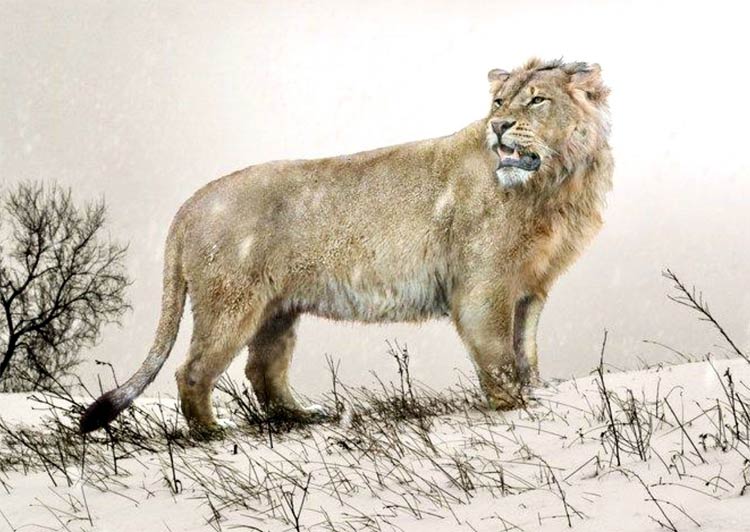
Habitat
The American lion (Panthera atrox) was a versatile predator that lived in a wide range of habitats during the Pleistocene era. Fossils of the American lion have been found in many different types of environments, including grasslands, forests, and even desert regions. This suggests that the American lion was able to adapt to a variety of habitats and ecological conditions.
During the Pleistocene, North America was home to a wide variety of large mammals, such as mammoths, camels, bison and horses, which roamed the grasslands and open woodlands. It is likely that the American lion was able to exploit these different habitats and prey types by being a generalist predator, able to live in a wide range of environments.
In the northern latitudes, American lions lived in the tundra, where they preyed on large herbivores such as the woolly mammoth. In the south, they lived in the savannah, where they hunted bison, horses and camels. They also lived in forested areas, where they preyed on deer, elk and other ungulates.
In addition to its physical adaptations, the American lion’s hunting strategies also would have been influenced by the different habitats it lived in. For example, in open grasslands, the American lion would have had to rely on its speed and endurance to chase down prey, while in forested areas, it would have had to rely on stealth and ambush tactics to catch its prey.
Overall, the American lion (Panthera atrox) was a versatile predator that was able to adapt to a wide range of habitats and ecological conditions. Its fossils have been found in many different types of environments, which suggests that it was able to exploit a variety of habitats and prey types to survive.
The American lion (Panthera atrox) and the saber-toothed cat, Smilodon fatalis, were both large predators that lived in North America during the Pleistocene era. While they shared a similar time period and habitat, there are some key differences between these two animals.
One of the main differences is their size, the American lion was significantly larger than Smilodon fatalis. The American lion weighed up to 600 pounds, while Smilodon fatalis weighed between 400-600 pounds. This size difference would have made the American lion better suited for hunting large prey such as mammoths and bison, while Smilodon fatalis was better adapted for hunting smaller prey.
Another difference is their hunting strategies, the American lion was known to hunt in packs, which would have been an efficient way to take down large prey, while Smilodon fatalis was a solitary hunter that would have relied on its powerful jaws and sharp teeth to take down its prey.
In terms of physical characteristics, the American lion had a more robust skull and teeth, which were adapted to take down large and robust prey such as mammoths, camels and bison, while Smilodon fatalis had elongated upper canines, up to 7 inches long, that were used to deliver a fatal bite to the neck of its prey.
It is believed that the American lion and Smilodon fatalis coexisted in North America for a period of time, and it has been suggested that competition between the two predators may have played a role in the extinction of the American lion. However, the exact cause of the extinction of the American lion is still debated among scientists, with some also suggesting that climate change and human hunting may have contributed to its disappearance.
The American lion and the saber-toothed cat, Smilodon fatalis, were both large predators that lived in North America during the Pleistocene era. They had some similarities, such as their large size, but also some significant differences, such as their hunting strategies, physical characteristics and their prey preference. While their coexistence and possible competition, as well as other factors, may have contributed to the extinction of the American lion.
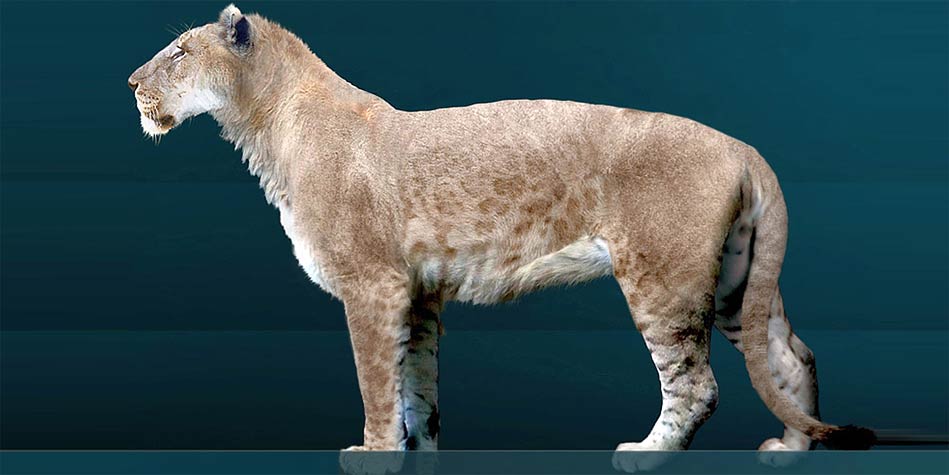
American lion vs. smilodon
The American lion coexisted with the smilodon – the saber-toothed tiger (Smilodon populator) – but it was lighter (the smilodon weighed 360-400 kg) and had a different hunting pattern than the prehistoric tiger.
On the other hand, the American lion could have been more intelligent than the smilodon; thousands of hunting saber-toothed tigers were captured in La Brea Tar Pits, but only several tens of American lions fell into that trap.
Intelligence could have been a key feature that guaranteed survival in the Pleistocene ecosystem of North America.
Who would win the fight: the American lion or the saber-toothed tiger (Smilodon)?
It is difficult to say for certain who would have won a fight between the American lion (Panthera atrox) and the saber-toothed cat, Smilodon fatalis, as both animals were formidable predators with unique adaptations for hunting.
The American lion was significantly larger than Smilodon fatalis, weighing up to 600 pounds compared to Smilodon’s 400-600 pounds. Its size and strength would have given it an advantage in a physical confrontation, as well as its hunting strategy, hunting in packs which would have made it more efficient in taking down large prey.
Smilodon fatalis, on the other hand, had elongated upper canines, up to 7 inches long, that were used to deliver a fatal bite to the neck of its prey. Smilodon fatalis also had a more compact, muscular build that would have made it agile and powerful, allowing it to take down prey quickly and efficiently.
It’s worth noting that both American lions and Smilodon fatalis were apex predators of their time, they probably didn’t cross paths that often as they had different prey preferences and hunting strategies. The American lion would have been more focused on hunting large herbivores such as mammoths, camels and bison, while Smilodon fatalis would have been more focused on hunting smaller prey.
In conclusion, it is likely that the outcome of a fight between the American lion and Smilodon fatalis would have been determined by a variety of factors, such as the animals’ physical condition, the specific individuals involved, and the location and circumstances of the encounter. It’s impossible to determine a clear winner in this hypothetical scenario.
A Smilodon populator would have a better chance in such a fight.
Both American lions and Smilodon populator were apex predators of their time, they probably didn’t cross paths that often as they had different prey preferences and hunting strategies. The American lion would have been more focused on hunting large herbivores such as mammoths, camels and bison, while the Smilodon populator would have been more focused on hunting smaller prey.
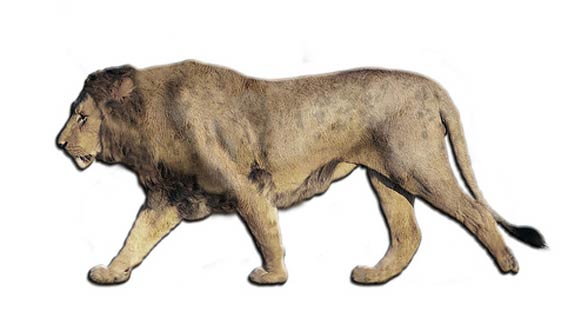
Excavations and skeletons
The majority of American lions’ skeletons – about 100 – were found in La Brea Tar Pits (Los Angeles). Thanks to these fossils, the anatomy of this animal was well-explored. It turned out that the body structure and teeth had been very similar to those of modern-day lions, but the prehistoric species was larger (by 25%) and heavier.
Other predators
The habitat of the American lion was full of other tremendous predators, such as the short-faced bear (Arctodus simus) or the so-called dire wolf (Canis dirus), which competed with the American lion for food.
Extinction
The end of the last glaciation and the fact that humans increasingly hunted for the possible prey of the lions contributed to the extinction of, among others, the short-faced bear, dire wolf, and the American lion.
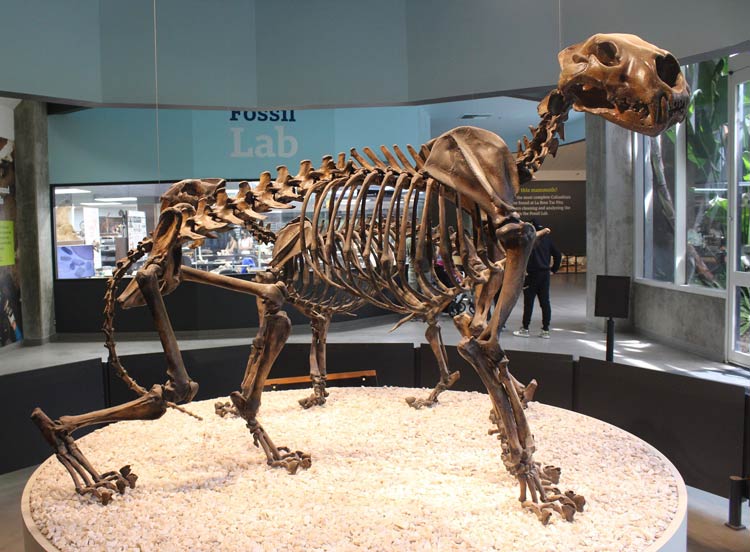
Details and dimensions (size)
The American lion (Panthera leo atrox / Panthera atrox)
- Dated: 340,000 – 11,000 years ago (the Pleistocene)
- Main areas of occurrence: North and South America
- Body length without the tail: 160 – 250 cm (5ft 3in – 8ft 2in)
- Height at shoulders: 120 cm (3.94 ft)
- Weight: 250 – 350 kg (551 – 771 lb)
Previously it was thought, the American Lion weighed more. Boris Sorkin in “A biomechanical constraint on body mass in terrestrial mammalian predators” (2008) estimated its weight at 420 kg (930 lb). Today, however, it is believed that it was lighter.

Cave lion and American lion – interesting facts
- The Latin term spelaea means ”cave”, and atrox can be translated as “cruel” or “dreadful”.
- On the basis of the found vessels dating from the Pleistocene, it has been shown that the cave lion was associated with beliefs of people of that time.
- The oldest fossils of the species Panthera are dated from 3-4m years ago, and they were found in Tanzania.
- The American lion was not only larger than the modern African lion, but it was also more robust, with a skull and teeth that were adapted to take down large and robust prey such as mammoths, camels and bison.
- The American lion had a unique hunting strategy, it was known to hunt in packs, which would have been an efficient way to take down large prey such as mammoths and bison.
- The American lion’s extinction around 11,000 years ago is contemporaneous with the extinction of several other large mammals, such as mammoths and camels which were their primary prey.
- Recent research suggests that the American lion, along with other large carnivores, might have played an important role in shaping the vegetation patterns of North America.
- The American lion’s extinction might have also been a result of human hunting, as human populations expanded and hunted large mammals, they might have also hunted the American lion to extinction.
- The American lion’s extinction might have also been a result of competition with other predators such as the saber-toothed cat, Smilodon fatalis.
- Despite its extinction, the American lion continues to be an important symbol in American culture and its fossils continue to be studied by paleontologists to learn more about this ancient predator.
- The American lion is also known as the “North American Cave lion” as many of the fossils have been found in caves.

Discussion / Podcast on American lion
Let’s listen to the discussion about American lion – the largest lion in history
Recommended
- Eurasian cave lion
- Smilodon – Saber-toothed tiger
- Fights of animals
- Big cats
- Black panther
- Leopard
- Snow leopard
- Lions
- Tigers
- White lions
- White tigers
- Bengal tiger
- Sumatran tiger
- Liger
- African Lion
- Fastest animals
- Fastest birds



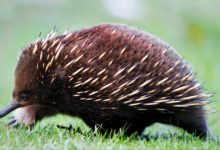


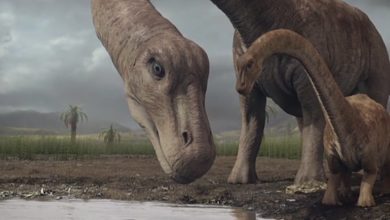
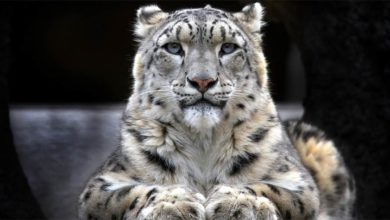
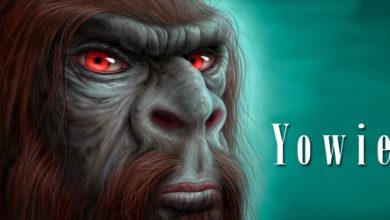
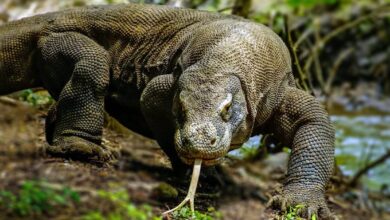
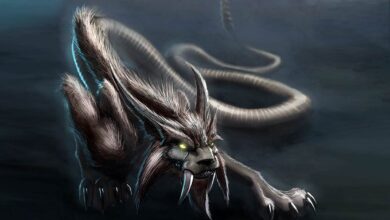

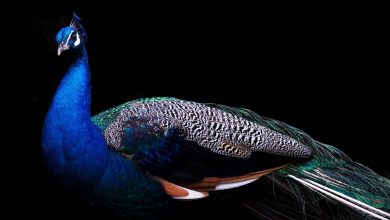
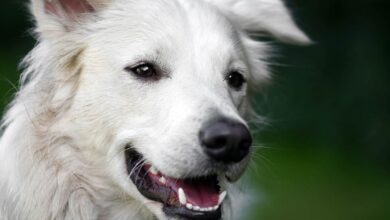


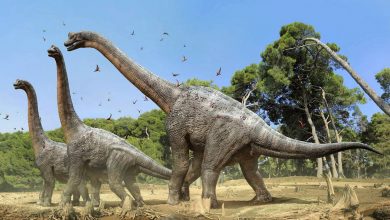
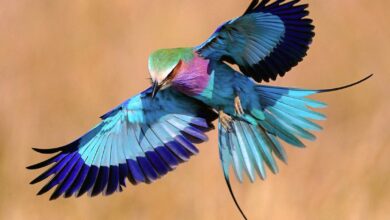
I wish these lions have been restored and live presently. It would have been nice.
Mitochondrial DNA shows that this species is a lion.
The largest and most powerful eagle in the world lives only in South America
youtube.com/watch?v=QyewFt3aeBY
Why do you write about it under the article about lion, not in the article on eagles?
I Did not no that.